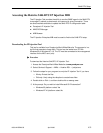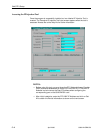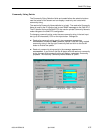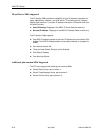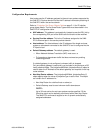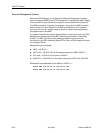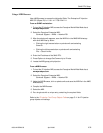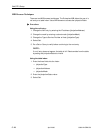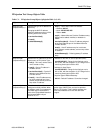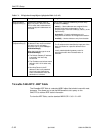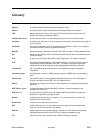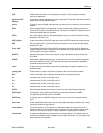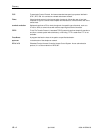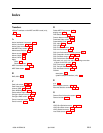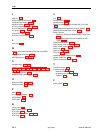
Glossary
GL-3
8000-A2-GB20-50
April 2000
Network Service Provider. A local telephone company or ISP that provides network
services to subscribers.
A proprietary network management program used with HP OpenView that helps a network
administrator manage SNMP devices.
A group of control and data characters that are switched as a unit within a communications
network.
Packet InterNet Groper. A program that is useful for testing and debugging networks. It
sends an Echo packet to the specified host, and waits for a response. It reports success or
failure and statistics about its operation.
Plain Old Telephone Service. Standard telephone service over the PSTN with an analog
bandwidth of less than 4 Hz.
A device that filters out the DSL signal and allows the POTS frequencies to pass through.
Point-to-Point Protocol. A protocol for packet transmission over serial links, specified by
Internet RFC 1661.
Proxy Address Resolution Protocol (ARP). A technique for using a single IP address for
multiple networks. A device responds to ARP requests with its own physical address, then
routes packets to the proper recipients.
Remote Authentication Dial-In User Service. A user authentication protocol defined by
RFC 2058.
Rate Adaptive Digital Subscriber Line. A technique for the use of an existing twisted-pair
line that permits simultaneous POTS and high-speed data communication at adaptive
symmetric and asymmetric rates.
A device that connects LANs by dynamically routing data according to destination and
available routes.
A table used by a node to route traffic to another node in the multiplexer network.
Remote Termination Unit. A DSL device installed at the customer premises.
Interface name of a DSL card’s DSL port #1.
Interface name of a DSL card’s DSL port #2.
Interface name of a DSL card’s DSL port #3.
Interface name of a DSL card’s DSL port #4.
Simple Network Management Protocol. Protocol for open networking management.
An application level program that facilitates communication between an SNMP
management system and a device. See NMS.
A message sent to an SNMP manager to notify it of an event, such as a device being
reset.
A user-specified permanent entry into the routing table that takes precedence over routes
chosen by dynamic routing protocols.
The subnet portion of an IP address. In a subnetted network, the host portion of an IP
address is split into a subnet portion and a host portion using an address (subnet) mask.
This allows a site to use a single IP network address for multiple physical networks.
A number that identifies the subnet portion of a network address. The subnet mask is a
32-bit Internet address written in dotted-decimal notation with all the 1s in the network and
subnet portions of the address.
NSP
OpenLane DCE
Manager
packet
PING
POTS
POTS splitter
PPP
Proxy ARP
RADIUS
RADSL
router
routing table
RTU
s1c
s1d
s1e
s1f
SNMP
SNMP agent
SNMP trap
static route
subnet address
subnet mask



